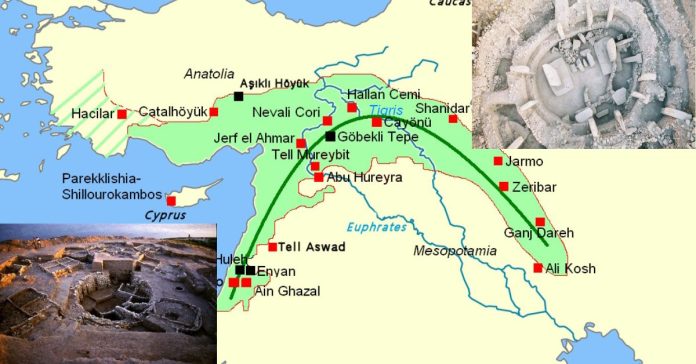During the Pre-Pottery Neolithic (PPN) period in the Near East, spanning approximately 10,000 to 8,000 BCE, people underwent a transformative shift from nomadic hunter-gatherer lifestyles to more settled agricultural communities. Among the myriad archaeological sites from this period, Jerf el-Ahmar in northern Syria and Göbeklitepe in southeastern Türkiye stand out as pivotal locales that offer profound insights into early Neolithic societal transformations.
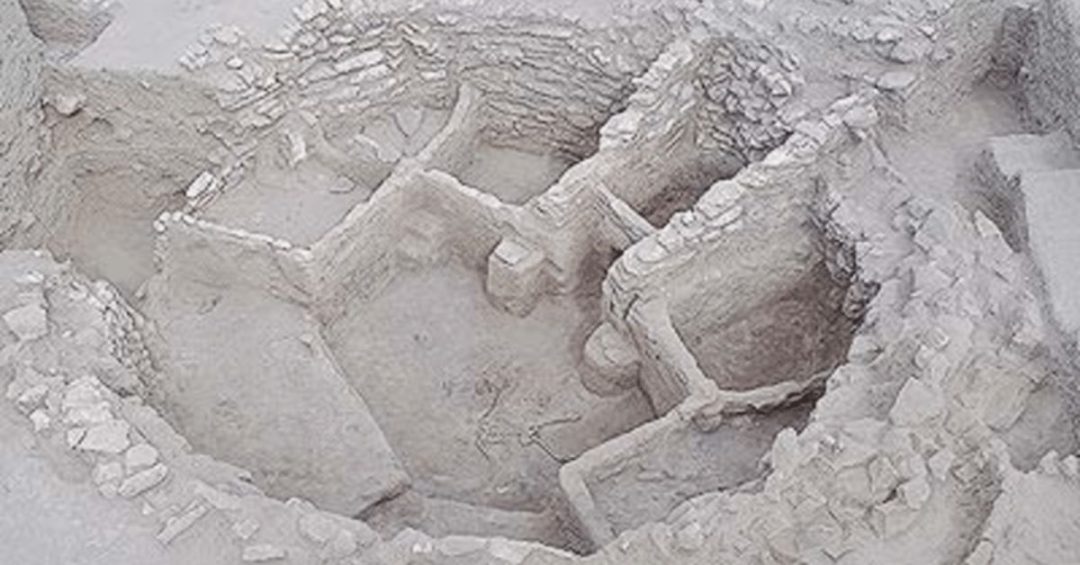
Göbeklitepe features monumental stone pillars arranged in circular enclosures, decorated with intricate carvings of animals and abstract symbols. These structures, likely among the earliest known temples, indicate that PPN communities placed a strong emphasis on ritual and communal gatherings.The site’s complexity and scale indicate a high degree of social organization and cooperation, challenging previous notions that such architectural feats were beyond the capabilities of pre-agricultural societies.
Jerf el-Ahmar: A Shift in Neolithic Architecture and Community Life
Early Communal Architecture and Storage
Jerf el-Ahmar provides a different yet complementary perspective on PPN life. The site features communal architecture, including large, circular buildings that likely served as centers for community activities and storage. Notably, these structures exhibit early examples of rectilinear architecture, marking a transition from round to rectangular building designs that became prevalent in later Neolithic periods. The presence of communal storage facilities at Jerf el-Ahmar underscores the emerging importance of food surplus management and collective resource sharing in early agricultural communities.
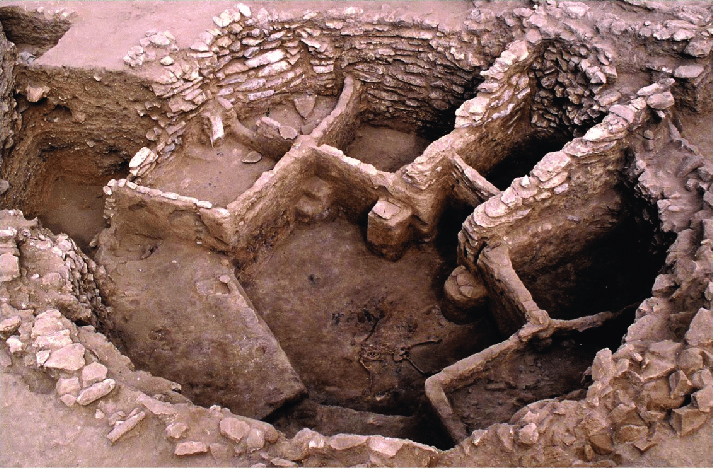
Symbolism and Cultural Connections
Recent research has illuminated several connections between these sites, particularly in terms of symbolism, architectural design, and shared cultural practices. Both sites feature T-shaped pillars, suggesting a symbolic or functional link in their use. Additionally, the communal and ritualistic aspects evident at both locations point to a broader network of social and ideological exchange among PPN communities.
A Broader Neolithic Network
These connections imply that sites like Göbeklitepe and Jerf el-Ahmar functioned as nodes within a larger social network that facilitated the sharing of symbolic and cultural practices across regions. This interconnectedness highlights the complexity of early Neolithic societies and their ability to develop shared traditions despite geographical distances.
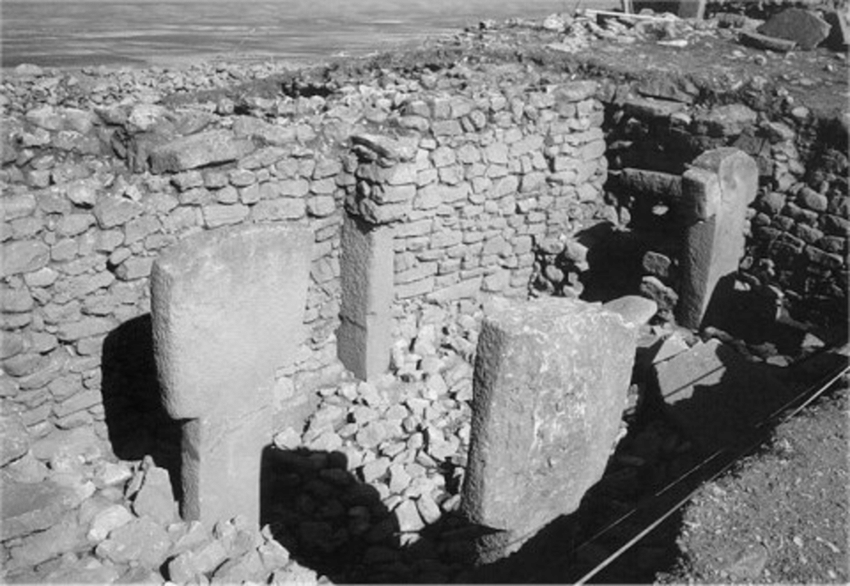
Chronological and Cultural Context
Jerf el-Ahmar (c. 9600–8500 BCE) predates Göbeklitepe’s peak (c. 9600–8200 BCE), placing both within the Pre-Pottery Neolithic A (PPNA) period.This overlap suggests a network of cultural exchange across Upper Mesopotamia, where ideas about monumental architecture, symbolism, and communal rituals spread between settlements. Göbeklitepe’s role as a possible “central” ritual site may have influenced smaller centers like Jerf el-Ahmar, or vice versa.
Shared Symbolic and Artistic Motifs
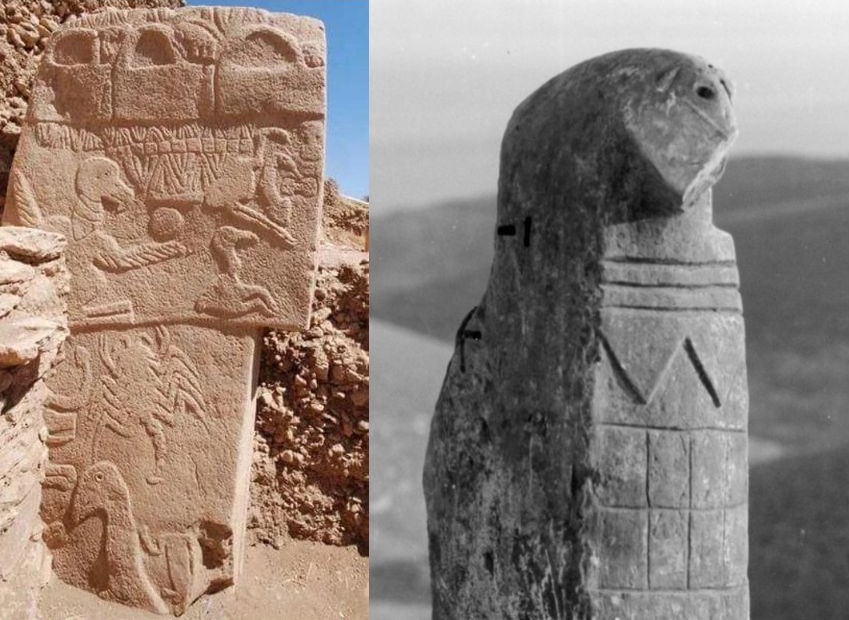
Both sites exhibit striking similarities in their use of animal symbolism. For instance, the Griffon Vulture appears prominently at Jerf el-Ahmar, while Göbeklitepe features vulture imagery in its reliefs, suggesting a shared symbolic language tied to death, rebirth, or cosmology. Additionally, artists used geometric motifs like the triangular-headed snake at both locations, showing a shared visual vocabulary across the region. These symbols likely had ritual significance, possibly connected to communal beliefs or ancestor worship.
Architectural Parallels
Architectural analysis reveals parallels in design and function. Göbeklitepe’s circular structures, with their massive T-shaped pillars, share similarities with Jerf el-Ahmar’s subterranean communal buildings , which were larger than domestic dwellings and likely served ceremonial purposes. Both sites employed open, non-domestic spaces that facilitated collective gatherings, as evidenced by multi-sensual analyses of their structures. Comparative studies with sites like Nevalı Çori and Çatalhöyük further contextualize these architectural innovations within a broader Neolithic tradition.
Ritual Practices and Material Culture
Ritual practices at Jerf el-Ahmar, such as the placement of aurochs horns and skulls in burned structures, mirror Göbeklitepe’s emphasis on animal iconography and possible sacrificial rituals. These finds suggest a shared emphasis on communal feasting or ceremonial displays of power. However, differences exist: stone troughs at Jerf el-Ahmar and Çatalhöyük were likely used for heating, whereas Göbeklitepe lacks such features. hinting at regional adaptations of shared traditions.
Conclusion
Jerf el-Ahmar and Göbeklitepe demonstrate the complexity of Pre-Pottery Neolithic societies, where architecture and symbolism actively shaped early settled life. The shared features of these sites, including T-shaped pillars, animal motifs, and ritual spaces, indicate a broader cultural network that connected communities across regions. While each site maintains its unique characteristics, both illustrate the diversity and interconnectedness of Neolithic innovations, providing valuable insights into humanity’s early steps toward civilization.

